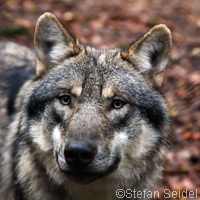Wolves eating less than 1% of German livestock: study
Despite the reappearance of wolves in Germany, local farmers should not worry about these creatures attacking and eating their livestock. Less than 1% of farm animals are on the wolves' menu, new research shows. Presented in the journal Mammalian Biology, the study highlights how wolves will not risk confrontation with guard dogs or hazardous objects in order to secure food. Zoologists from the Senckenberg Research Institute in Görlitz in Germany probed the feeding habits of wolves in the first eight years since their re-emergence. The team assessed both what wolves currently eat and how their feeding habits have changed over the years. Their results indicate wolves have a high capacity for adapting in order to meet their dietary needs. Wolves had been wiped out in Germany for many years. However, they are slowly making their way back. 'The dietary habits of wolves has been the greatest point of contention with their return to Germany and it induced us to examine in closer detail the feeding habits of the wolves that migrated to Lusatia over 10 years ago,' says Hermann Ansorge, head of the Zoology Department at the Senckenberg Museum of Natural History in Görlitz. 'We took a look at what was on the menu for the wolves and how this has changed since the appearance of wolves in East Germany.' The team gathered and tested more than 3,000 samples of wolf scat for undigested evidence of the animals' prey, including bones, hair, hooves and teeth. The data show that wild ungulates represented more than 96% of the wolves' prey, and the majority of these were roe deer (55.3%), followed by red deer (20.8%) and wild boar (17.7%). Hares accounted for almost 3% of prey. Less than 1% of the prey investigated was of livestock origin, says Ansorge, adding: 'As long as sheep and other livestock are well protected and there is a sufficient supply of wild animals, the wolves will not risk confrontation with electric fences and guardian dogs. We were interested to find out how, why and how quickly the dietary composition of the wolf has changed in Saxony.' The wolves made their way into Germany from Poland, where they ate mostly red deer. In the first years of the study, the researchers found a significantly higher proportion of red deer consumption over roe deer. 'We asked ourselves why the wolves changed their behaviour or whether the initial conditions had changed,' Dr Ansorge says. Compared with Polish forests, those in Lusatia are smaller and are crossed by paths and fields. This means there is more living space for roe deer and wild boar, while red deer usually retreat to the more spacious wooded areas. So roe deer are a simple and frequent prey from the wolves' perspective, according to the researchers. Environmental conditions triggered the changes in the wolves' eating patterns, the researchers suggest. The wolves adapted quickly, needing less than two generations to become used to the new conditions of their new habitat. Currently, 9 wolf packs live in Lusatia with around 34 young. 'The potential for conflict between man and wolf is very low,' says Dr Ansorge. 'There really is nothing standing in the way of the wolf returning.'For more information, please visit:Senckenberg Research Institute:http://www.senckenberg.de/root/index.php?page_id=71Mammalian Biology:http://www.sciencedirect.com/science/journal/16165047
Countries
Germany



